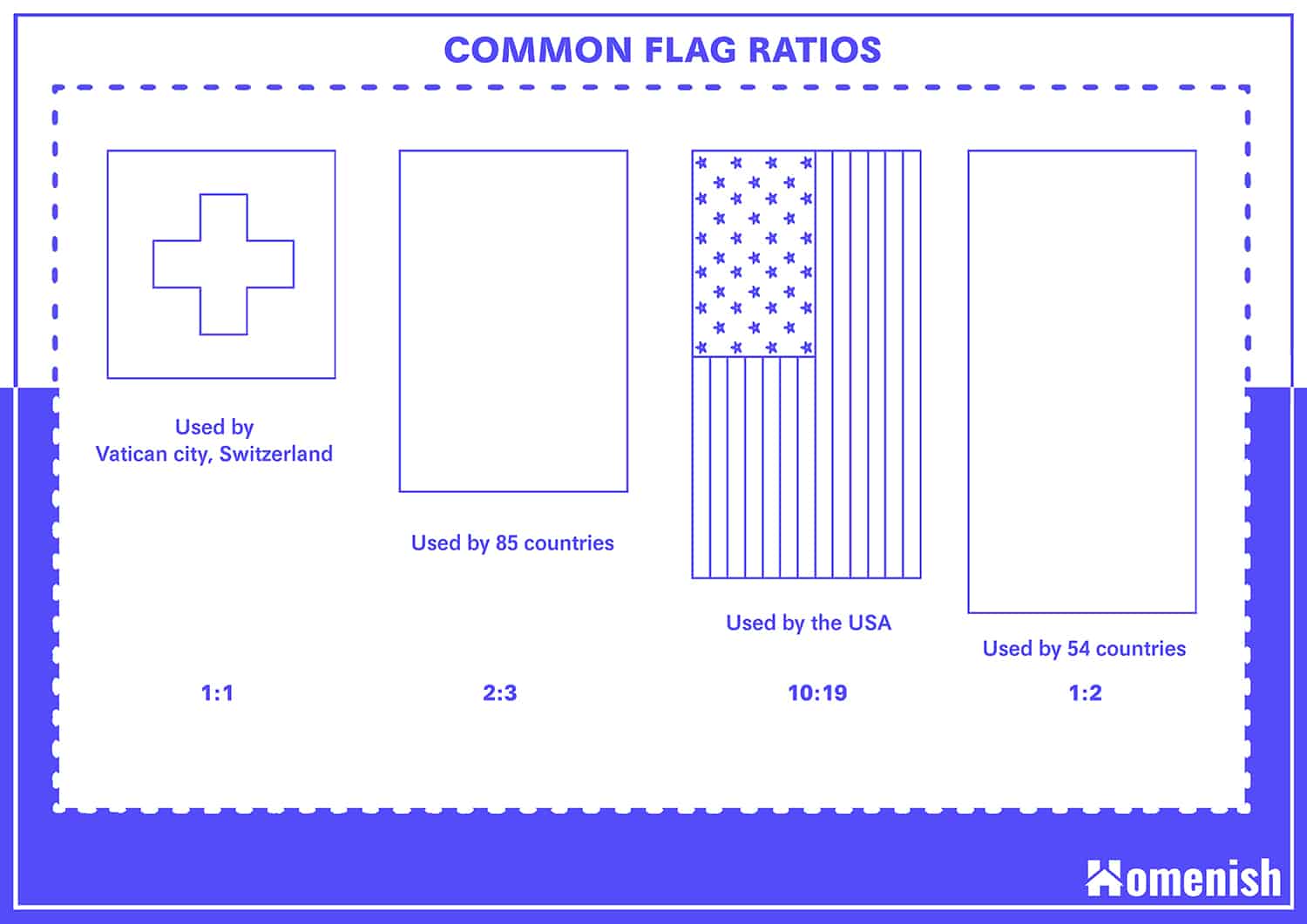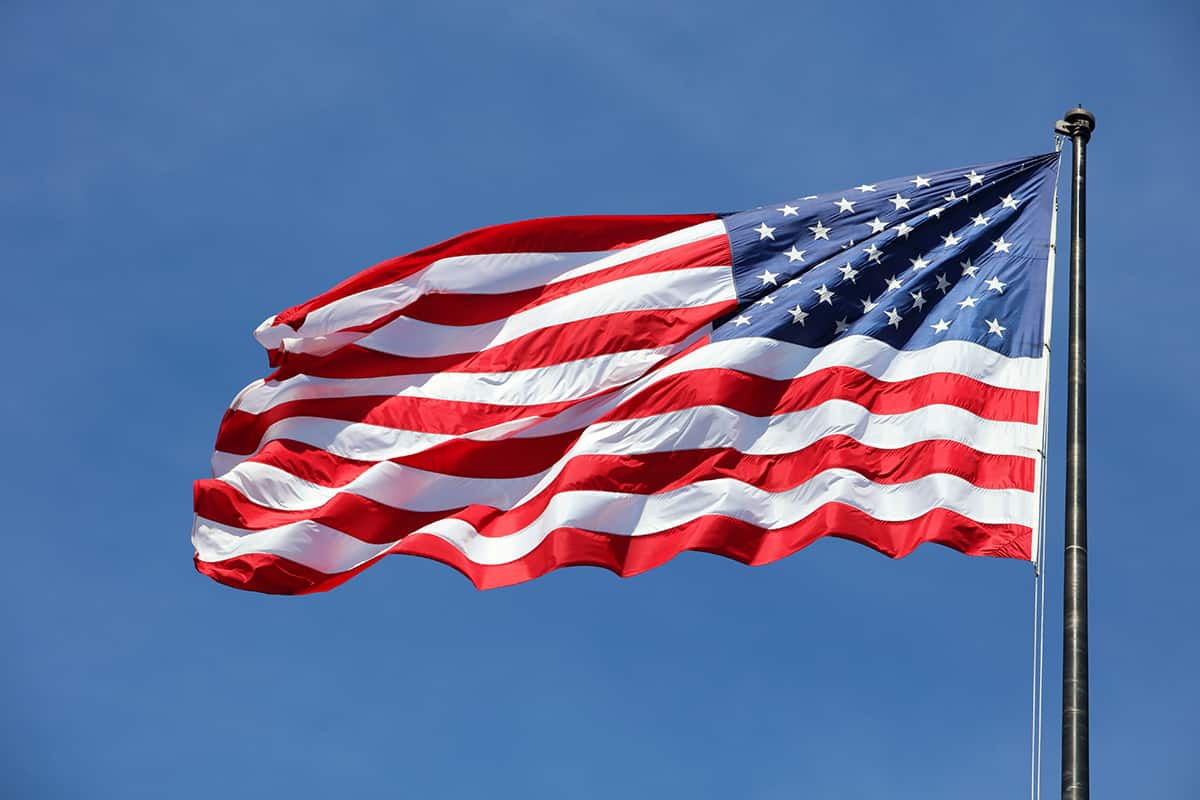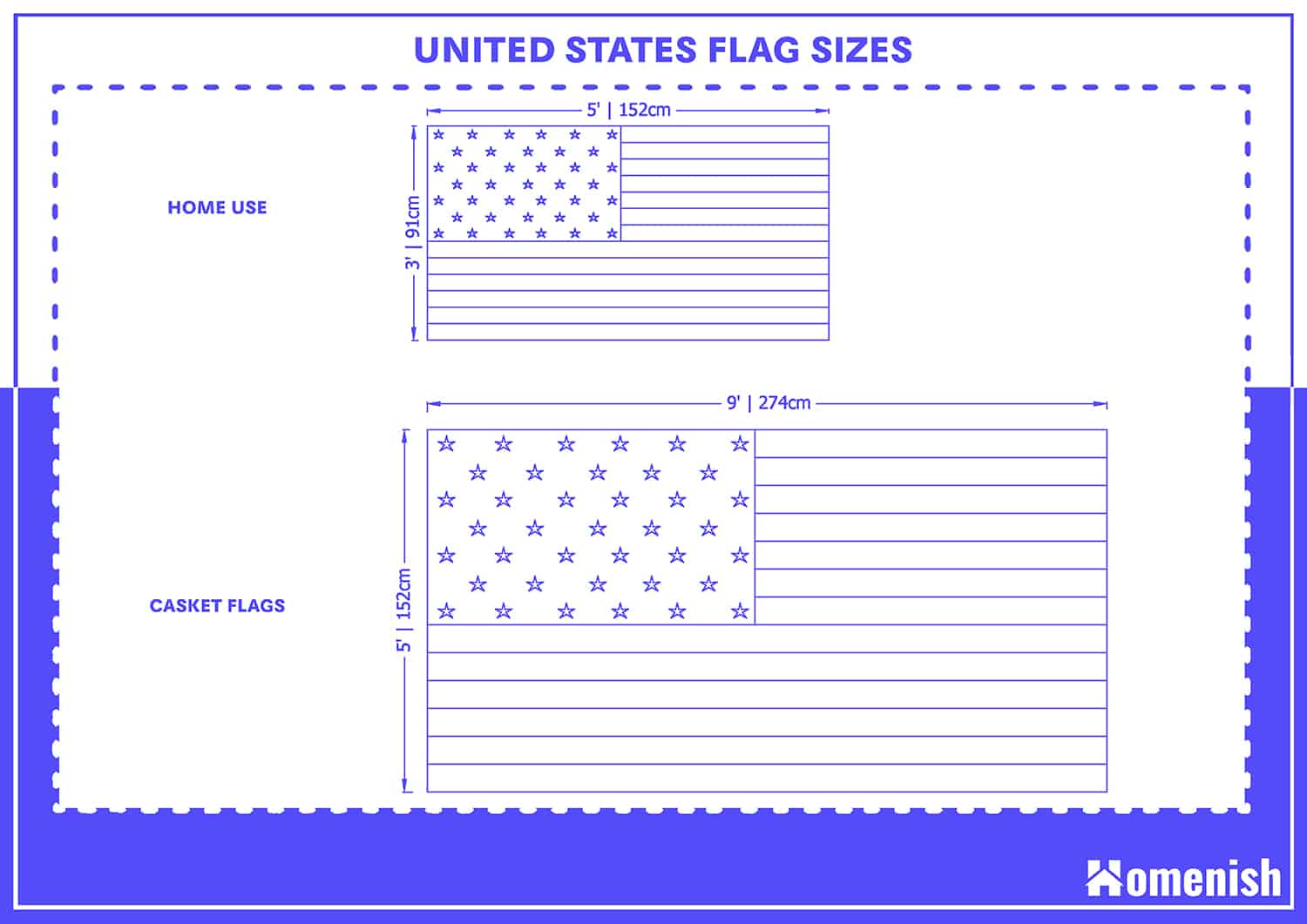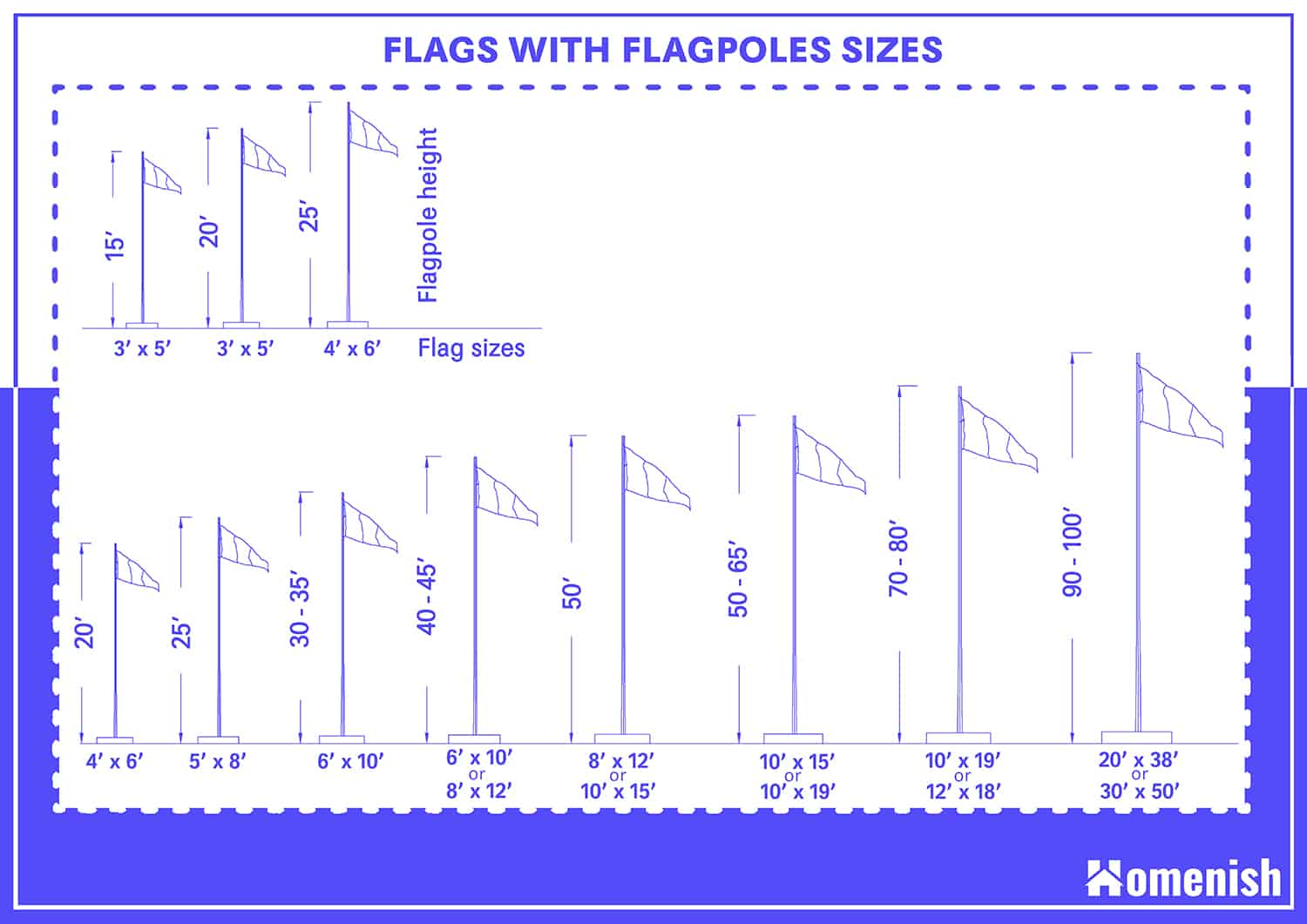Each nation has its own flag, and these will come in various sizes. Interestingly, there is no such thing as a standard dimension of a flag for most countries, as the size itself is not considered to be as important as the proportions or ratio measurements. The ratio will determine the exact shape of a flag by stating what proportion of the width of the flag the height should be.
Here we will look at various ratios as determined by each nation and some common dimensions for flags used at home, as well as those on flagpoles for public display.
Flag Ratios
The ratio dimensions of a flag are important because they dictate how the design of a flag will appear. If the ratio is out, then the image depicted on the flag will not be true to the original. Each nation determines the ratio of the length compared to the width of its flag, and official flags must comply with this formula.
The correct flag ratio is shown as two numbers separated by a colon (:), with the first number relating to the height of the flag and the second number relating to the width of the flag.
For example, a ratio of 1:2 will mean that the height of the flag is half the size of the width. A ratio of 2:3 will mean that the height of the flag is two-thirds the size of the width measurement.
Ratios can also be presented as numbers with or without decimal points, and these are found by dividing the width number by the length number. For example, a ratio of 5:7 will give a decimal point number of 1.4 because 7 divided by 5 is 1.4.
Common Flag Ratios
The majority of flag dimensions are determined by ratios of 2:3 and 1:2. Of 195 sovereign states, 85 use the 2:3 ratios for their national flag, while 54 use the 1:2 ratio. The vast majority of flags have rectangular shapes of some sort, although a few are square-shaped. Square flags include those that represent Vatican City and Switzerland, with a ratio of 1:1.
Nations that have flags with the most common ratio of 2:3 include Austria, Barbados, Chile, China, Cyprus, Egypt, France, Greece, India, Italy, Japan, Morocco, Portugal, Romania, Saudi Arabia, South Africa, Spain, Thailand, Turkey, Venezuela, and Vietnam, among many others.
Nations that have flags with the second most common ratio of 1:2 include Armenia, Australia, Canada, Cuba, Fiji, Hungary, Ireland, Jamaica, Mongolia, New Zealand, Palestine, Sri Lanka, the United Kingdom, and Zimbabwe, among many others.
The flag of the United States of America has a much less common ratio of 10:19 or 1.9, which is shared with only four other sovereign states. These are Liberia, the Marshall Islands, and Micronesia.
The ratio for the flag of the United States of America was set out in Executive Order 10834, which was dated 21st August 1959. This deemed the necessary ratio of the flag as required by all executive agencies.
These ratios are not applicable to the flag of the United States of America when it is used for home use or for non-executive agencies which do not represent the nation.
United States Flag Sizes
For the flag of the United States of America, there are some commonly found flag dimensions.
For flags used at home, for example, on a flagpole or hanging out of a window, then the exact ratios do not need to be met. Most American flags used at home will have dimensions of 3 feet in height and 5 feet in width.
Casket flags are much larger in order to cover the whole casket. These will measure 5 feet by 9 and a half feet.
Dimensions of Flags with Flagpoles
When flags are used in conjunction with flagpoles, the size of the flag will differ depending on the height of the flagpole. This is to ensure that the flag looks in proportion with the size of the pole, and there isn’t a feeling of the two being unbalanced.
For flagpoles that are used at home, those measuring 15 feet in height will have flags measuring 3 feet by 5 feet. Flagpoles measuring 20 feet in height will also have flags measuring 3 feet by 5 feet.
Home flagpoles measuring 25 feet in height will have slightly larger flags with dimensions of 4 feet by 6 feet. Flags used for public display will have different measurements.
These flagpoles are those which are not used for home use and instead may be used at town halls or on school property, for example. Flagpoles used in this instance, which measure 20 feet in height, will have flags measuring 4 feet by 6 feet.
Publicly displayed flagpoles measuring 25 feet in height will have flags with dimensions of 5 feet by 8 feet.
Those with heights ranging from 30 to 35 feet will have flags measuring 6 feet by 10 feet, and those with heights of between 40 and 45 feet can have flags that either measure 6 feet by 10 feet or 8 feet by 12 feet.
Public display flagpoles with a height of 50 feet will have flags measuring 8 feet by 12 feet or 10 by 15 feet.
Flagpoles with heights of between 60 and 65 feet will have flags measuring either 10 feet by 15 feet or 10 feet by 19 feet.
Flagpoles on public display with a height of between 70 and 80 feet will have flags with dimensions of 10 feet by 19 feet or 12 feet by 18 feet.
And finally, flagpoles on public display, which have a height of between 90 and 100 feet, will have flags measuring either 20 feet by 38 feet or 30 feet by 50 feet.
As we can see from these measurements, the ratio of the flag is not always maintained. This will only be of importance when the flag is being used in an official capacity.
Want to know how to hang flag correctly, be sure to check out our post on ‘ Where to Hang Flag on Front of House? ‘










